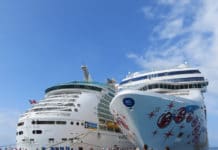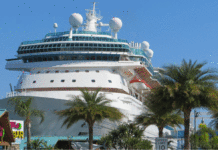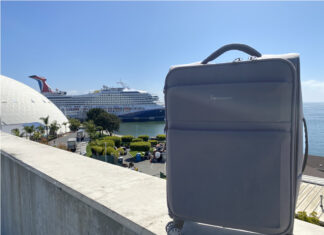Note: Since first writing this article, the Centers for Disease Control has come out with new guidelines for cruises to return to sailing, released technical instructions and updated rules for vaccinated passengers. We’ve updated the article below based on the latest from the CDC. Keep in mind that protocols continue to evolve.
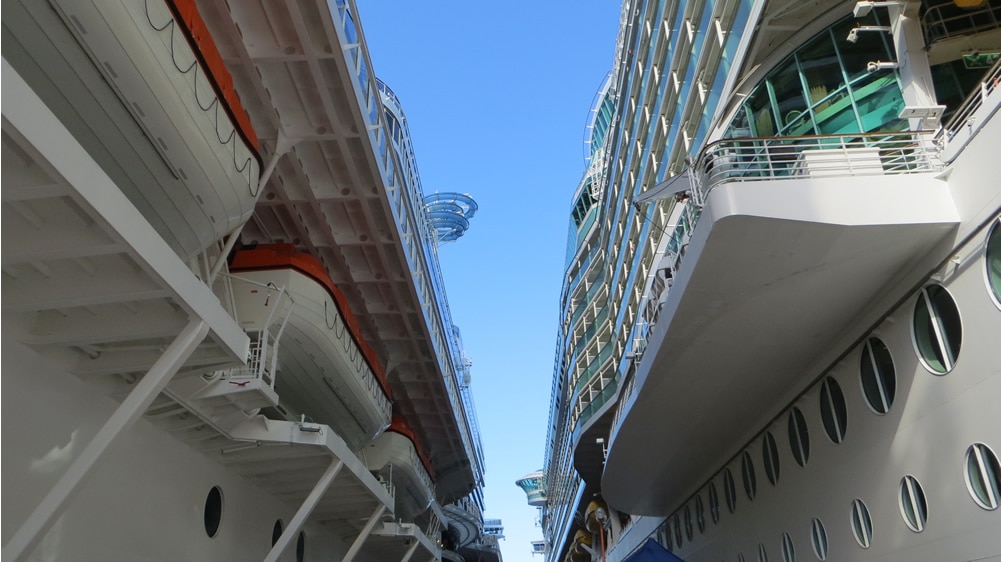
When it comes to the return of cruises there are plenty of questions. Will I have to be vaccinated? What will the experience be like? Will I have to wear a mask? Cruzely has covered these questions in-depth as the situation has evolved and will continue to do so.
But there is one unique question that many passengers have, and it could have a major impact on their cruise: What happens if a passenger on a cruise ship gets COVID?
In fact, in a recent survey, we asked passengers about their biggest questions for when cruises return. Among the most common wasn’t if cruising was safe or when trips will return. It was what happens if someone gets sick on the ship?
Will everyone have to quarantine if one passenger gets sick? Will cruise passengers be stranded on the ship? Will the cruise be cancelled?
People seem more concerned not about getting sick on their cruise… but what happens if someone else gets sick? And for good reason.
We all saw ships at the start of the pandemic held in quarantine. Passengers who weren’t ill were held on ships for days or weeks, with many eventually becoming sick. No one wants to take part in that experience.
So now that cruises are returning to the United States, what will happen to both healthy and sick passengers if someone gets COVID on a cruise ship?
Plans Put in Place to Prevent and Detect COVID
The world saw the terrible headlines when virus cases were linked to cruise ships at the start of the pandemic. The rise in cases led to the eventual suspension of cruises.
As we saw, however, those cases tied to cruising were actually relatively small (around 3,000-4,000 cases according to the Miami Herald) given the roughly 200 million cases of COVID now seen around the world. Even so, there’s little argument that a place like a cruise ship — with thousands of passengers in a relatively small area — can mean the spread of an illness.
In response, cruise lines have gone to work (along with the CDC) on creating policies and protocols to allow them to return sailing safely while reducing the risk of transmission on the ship. Those plans are extensive.
For an example, Royal Caribbean and Norwegian Cruise Lines actually joined together to create the “Healthy Sail Panel” — a team of medical experts tasked with coming up with plans on how to sail again while protecting passengers.
That panel released a list of 74 recommendations covering everything from how to keep passengers from getting sick to what to do if someone does come down with the virus.

Among the policies recommended by the panel or already announced by the cruise industry before vaccines were available:
100% testing of passengers and crew before boarding
Everyone boarding the ship would have to be tested prior to sailing. Perhaps the biggest move made by the industry, universal testing will help to limit the potential of a person boarding with COVID and possibly spreading it around the ship.
Limited capacity & social distancing
Cruises are starting back less than full capacity to allow more space for each passenger. As well, just like on land there are social distancing rules enforced around the ship in popular areas like casinos, pools, and theaters.
Facemasks
Perhaps the most controversial step is passengers on ships are being asked to mask up when distancing isn’t feasible. That doesn’t mean you have to wear a mask by the pool, but in interior areas of the ship, masks are recommended.
Advanced filtration
There’s concern that the virus can be spread through air conditioning systems. Because of that, many ships are being retrofitted with advanced filters capable of taking out smaller particles and also taking in fresh air instead of re-circulating indoor air.
Upgraded medical facilities
Among the recommendations set to be put in place are upgrades to ship medical centers to better handle potential virus outbreaks. Of course, that also includes tests available on ships should they be needed.
Contingency plans for cases on the ship (isolation, contact tracing, debarkation)
Cruise lines are also putting in new procedures for what happens if there is a case (or cases) on the ship. This includes cabins set aside for quarantines, contact tracing procedures, and plans for how to debark sick (and healthy) passengers.
Vaccines Mean Adjusted Protocols
While these policies are nice, they have also been quickly adjusted as the United States has enjoyed the wide availability of vaccines. Called a “game changer” by many in the industry, vaccines offer the ability to enjoy cruising the way it was before the crisis.
In fact, the CDC says that passenger life can largely go back to normal if the vast majority (95%+) of passengers and crew have the shot. This includes the option to not require testing, social distancing, facemasks on the ship.
There are a number of ships that plan to sail vaccinated cruises, where the onboard experience looks to be very different than when a mix of passengers sets sail.
Even so, we’ve now seen that vaccines do not mean COVID can’t be found on a cruise ship. One of the first sailings back sailed with fully vaccinated crew and passengers and two people tested positive while onboard.
That begs the question. What happen to the cruise and passengers in this situation?
What Happens to Passengers With COVID on a Cruise?
No matter how stringent the regulations, with the number of cases around the world, it seems inevitable that a case will eventually find its way onto the ship. Even cruise line executives acknowledge this.
“With all the protocols we have, there’s still likely, eventually at some point, to be a case on board,” said Carnival Corporation CEO Arnold Donald. “If it’s in the community overall, there’s no perfect system to prevent it.”
In addition to plans that cruise lines have announced, the CDC created a “Framework for Conditional Sailing.” Not only does this 40-page document outline how cruise lines can return, but it also spells out the rules they must follow to do so.
Among those rules laid out are those concerning what cruise lines must do if there is a case of COVID on the ship during a sailing. In addition, technical instructions lay out more details of what needs to be in place in the instance where cases are found.
So what happens if someone is confirmed or suspected of having COVID on a cruise?
In that case, the CDC says the following:
Minimum Standards for Management of Passengers and Crew from COVID-19-affected Cruise Ships for Restricted Passenger Voyages
(a) Based on a threshold of COVID-19 being detected in passengers or crew, as determined through CDC technical instructions or orders, a cruise ship operator must immediately take the following actions:
(1) Conduct such notification of passengers, crew members and other government entities as CDC may require.
(2) Immediately end the restricted passenger voyage, cancel future restricted passenger voyages until directed by the CDC that such voyages may resume, and return the ship to the U.S. port of embarkation.
(3) Immediately isolate any sick or infected passengers and crew in single occupancy cabins with private bathrooms and quarantine all remaining passengers and non-essential crew.
- CDC Framework for Conditional Sailing
First, according to these rules, if there is a “threshold of COVID-19” detected (1.5% of passengers or 1.0% of crew) on the ship, then the cruise will end and immediately return to the departure port. Future trips will also be canceled until allowed by the agency.
Anyone testing positive is set to be isolated on the cruise ship in a single-occupancy cabin. Passengers that are isolated with cases will have their food brought to them and have medical consults from the ship’s doctor.
From there, contact tracing is used to determine if other passengers have been in close contact. This is generally considered to be within six feet of a positive person for at least 15 minutes.
The CDC framework requires that cruise lines also have agreements in place with ports and health authorities. These agreements should outline disembarking sick passengers, including having transportation arranged to get them home or to medical care using non-commercial transportation. Passengers who drove to the port can be allowed take their own cars home.
The goal is to get people to medical help or back home while coming in contact with as few other people as possible.
In addition, housing agreements are to be put in place between cruise lines, ports, and health authorities. This means having places to stay on land for any passengers needing isolation or quarantine.
What Happens to Healthy Passengers If There Are Cases on Board?
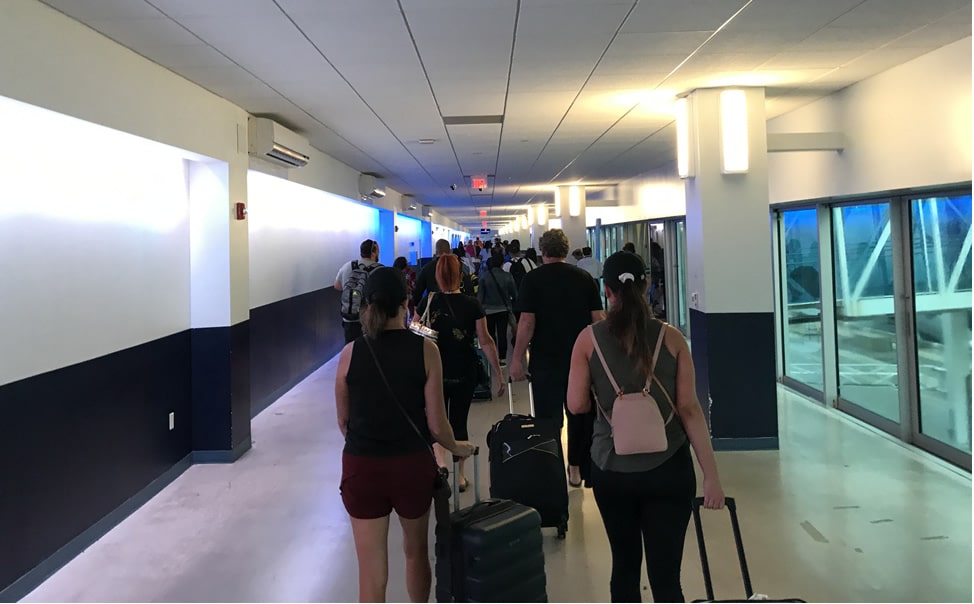
Even in the worst outbreaks tied to cruise ships, many more people did not get the virus than did have the illness. In other words, if there are cases on a cruise, it’s most likely the largest percentage of people will be healthy.
So what happens to those healthy passengers if they happen to be on a ship where COVID cases are found?
The big fear of many is that they will be stuck on the ship in port, confined to their rooms for an undetermined amount of time. The good news is that likely won’t be the case.
The CDC has laid out guidance for testing and quarantine of close contacts of positive cases. If you are vaccinated, then you only need to be tested if you are a close contact and you show signs of the virus. If not, then the CDC says testing nor quarantine is applicable (the cruise line may still opt to test, just to be sure).
However, if you are not vaccinated, then the rules are different. Most close contacts (unless having documentation of recent recovery) will need to be tested and quarantine for 14 days.
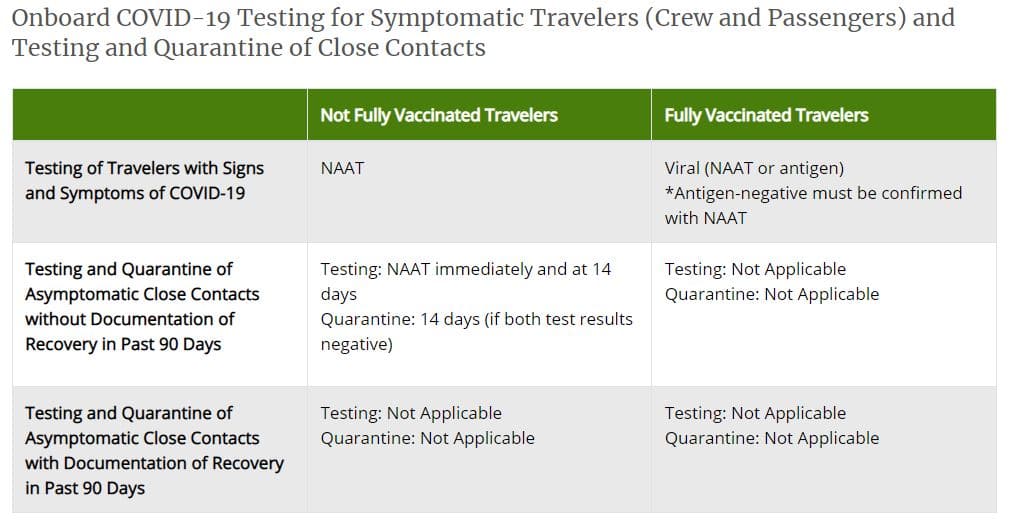
Unless you are unvaccinated and a close contact, then your cruise shouldn’t be disrupted, assuming the number of cases on the ship are lower than the CDC threshold of 1.5% of passengers or 1.0% of crew.
If your cruise is ended due to meeting the threshold, then your return home from the ship could be delayed. In fact, cruise lines are required to post a notice to passengers before booking that “if a certain threshold level of COVID-19 is detected onboard the ship during your voyage, the voyage will end immediately, the ship will return to the port of embarkation, and your subsequent travel, including your return home, may be restricted or delayed.”
Here it appears there is another set of different rules for vaccinated versus unvaccinated passengers. The CDC says that travelers should avoid commercial air or ground transportation for 14 days after the trip, unless they are vaccinated or have documentation of a recovery in the past 90 days.
Given that we’ve seen the risk of more spread by keeping passengers on a cruise ship during an outbreak, however, it seems unlikely that an entire ship will be quarantined without allowing healthy passengers to leave.
A Real-World Example of Cases on a Returning Cruise
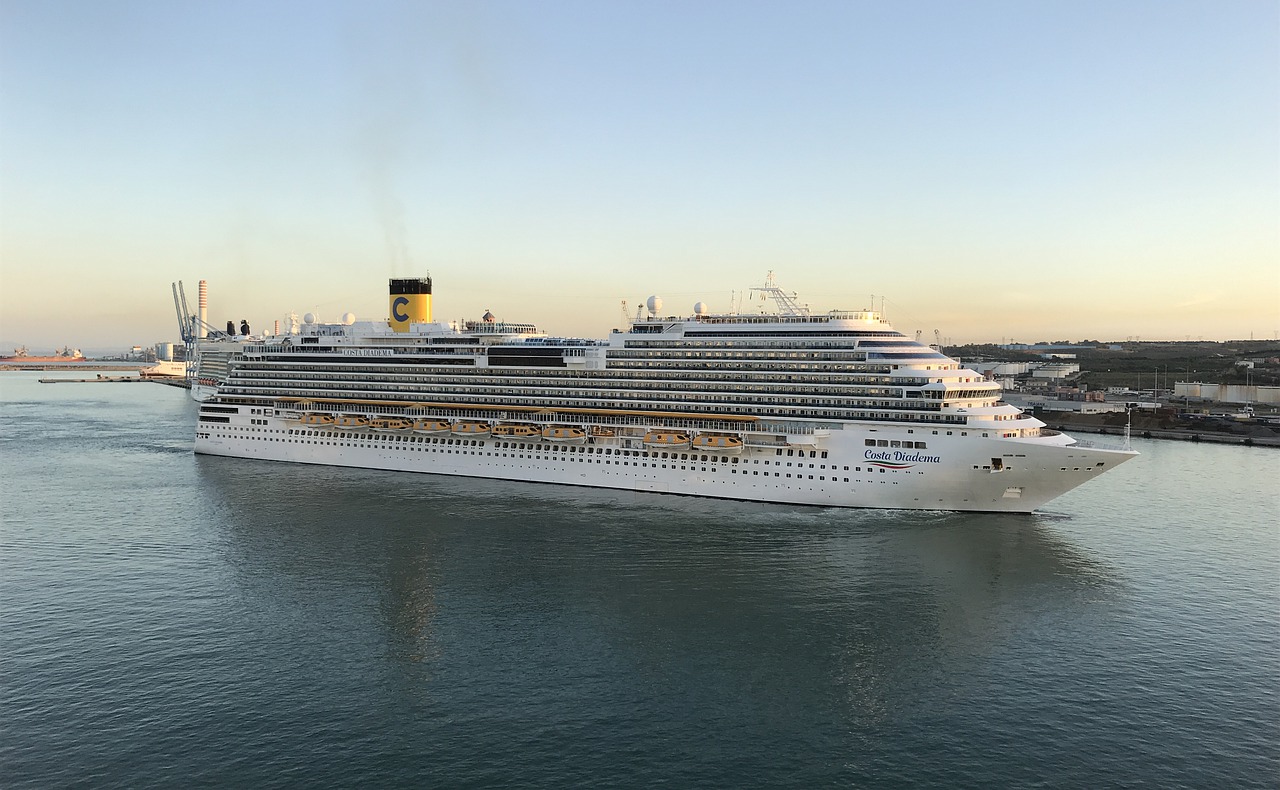
While the CDC rules spell out what should happen if a U.S.-based cruise ship has cases found, in Europe, we’ve already seen a real-world example. There, Costa Diadema had a situation where cases were discovered on the ship.
According to reports, seven passengers tested positive during the cruise. These passengers debarked while the cruise continued. Later, another passenger was identified through contact tracing and tested positive.
At that point, the cruise, which consisted of French passengers, was cancelled. France had recently declared a state of emergency in response to a sharp rise in cases in the country. With that in mind, while the number of passengers who tested positive was relatively small, the cruise line decided to cancel the sailing early. Passengers were reportedly all tested before disembarking.
So in this case, we saw a small number positive cases that allowed the cruise to continue at first. Eventually, however, the decision was made to cancel a cruise completely in response. Passengers were tested before leaving and allowed to return home.
In a more recent case in North America, two passengers were found positive on a fully-vaccinated Celebrity Millennium cruise. Apart from close contacts that were reportedly quarantined while testing, other passengers on the ship reported that the cruise continued as normal:
Putting aside hype and hysteria, it's only 2 passengers. Evening went on normally. Dinners were served in restaurants, shows were performed and no passengers were concerned enough to wear masks. Safety protocols worked on @CelebrityCruise #CelebrityMillennium!
— Stewart Chiron (@CruiseGuy) June 11, 2021
Bottom Line: As cruises return to the United States, there’s still plenty that’s yet to be seen. However, given the plans laid out by the CDC and what we’ve seen in Europe, there is a good idea of what will happen.
Small outbreaks seem like they will be handled onboard with isolation of selected passengers and contact tracing. Larger outbreaks could mean the end of the cruise and a large-scale debarkation of passengers.
Unvaccinated, close-contact passengers (unless recently recovered) will need to quarantine according to CDC rules. Those not in close contact and vaccinated passengers, however, seem to have far fewer requirements.
Related Articles:
- Highlights of Royal Caribbean’s & Norwegian’s 74 Recommendations to Return to Sailing
- Is It Safe to Book and Take a Cruise?




